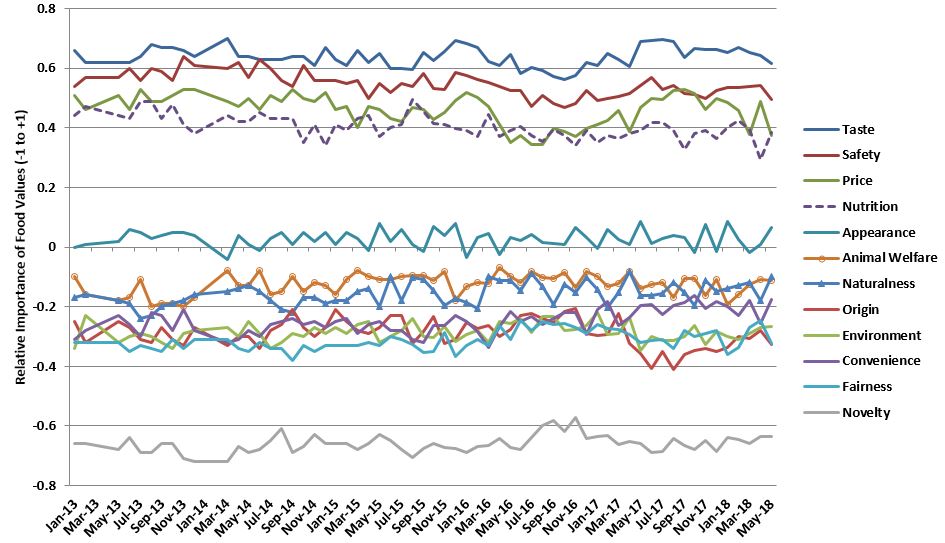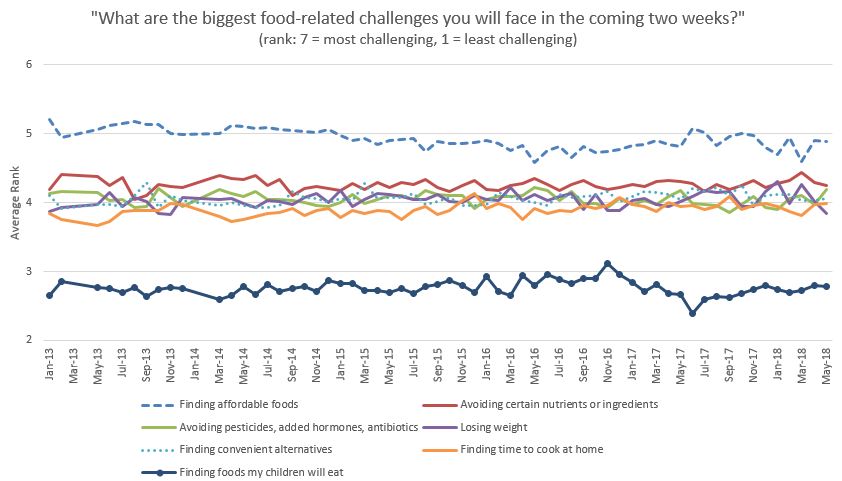Will we be able to produce enough food to feed a more populated and likely richer world in 2050? The answer to this question depends not just on what technologies we develop but also on what people in different parts of the world will want to eat in 2050. A new paper by Christophe Gouel and Houssein Guimbard in the American Journal of Agricultural Economics takes data from consumption of 7 categories of food in over 100 different countries to explore how food demand changes with income and population, and then they use these estimates to project future food demand given estimates of income and population growth.
First, they show that as incomes rise, demand for oils and fats and for animal-based food increases.
The following graph (from their appendix) shows the projected changes in global demand for different types of food on out to 2100.
Here is a summary of their findings:
“The main results of our projections to 2050 are that (a) food demand will increase by 47%, representing less than half of the growth experienced in the four decades before 2010; (b) this growth will come mainly from developing countries because in high-income countries, food demand is already at high per capita levels and population growth will be low; (c) growth in starchy staples will be small at 19%, supported by population increases because per capita consumption is predicted to decrease while demand for animal-based food will double, thereby increasing the global share of animal-based calories from 17% in 2010 to 23% in 2050; and (d) these projections present large uncertainties that are neglected in related studies: under alternative plausible futures for GDP and population, demand for animal-based calories increases between 74% and 114%.”














